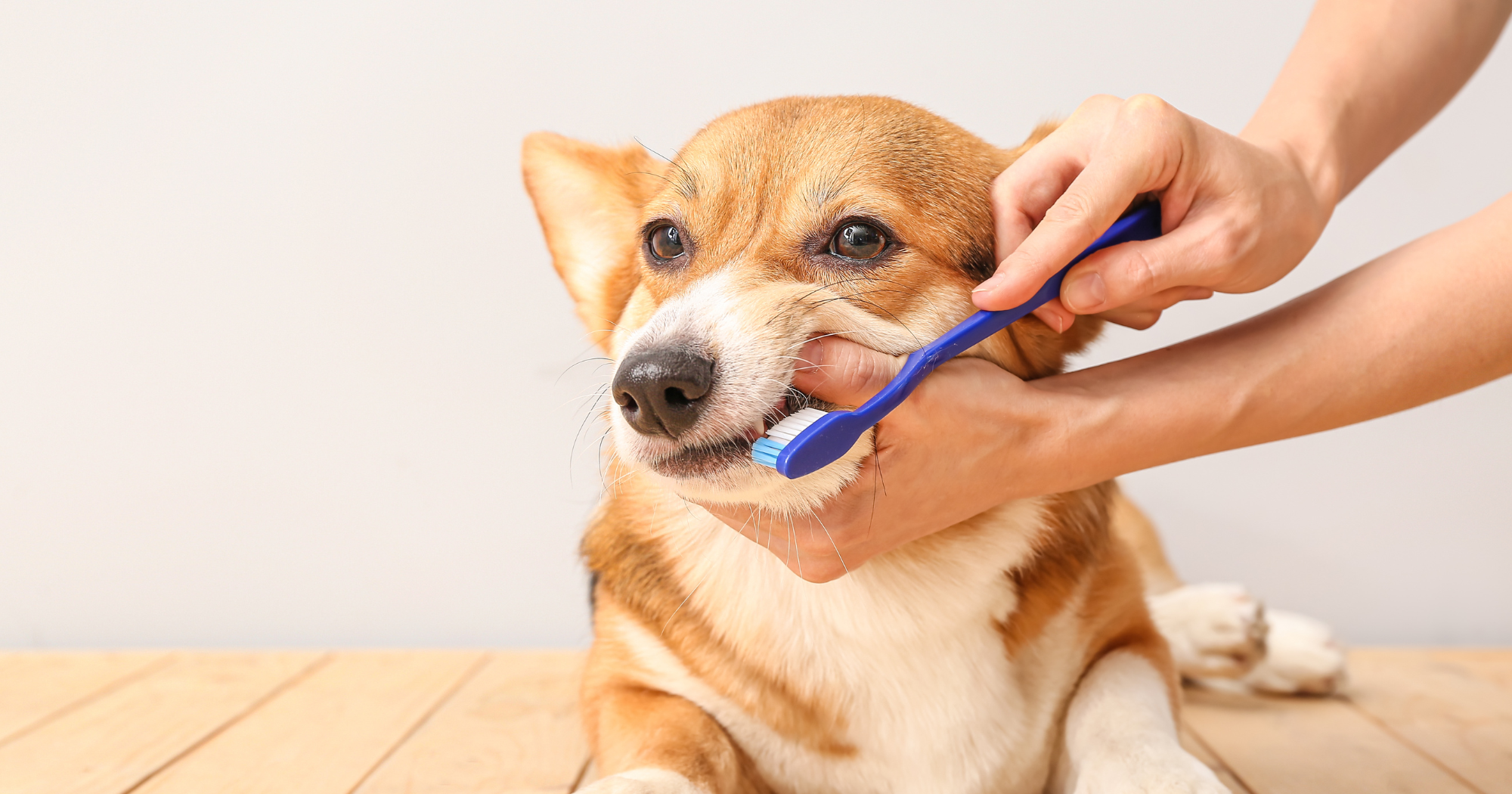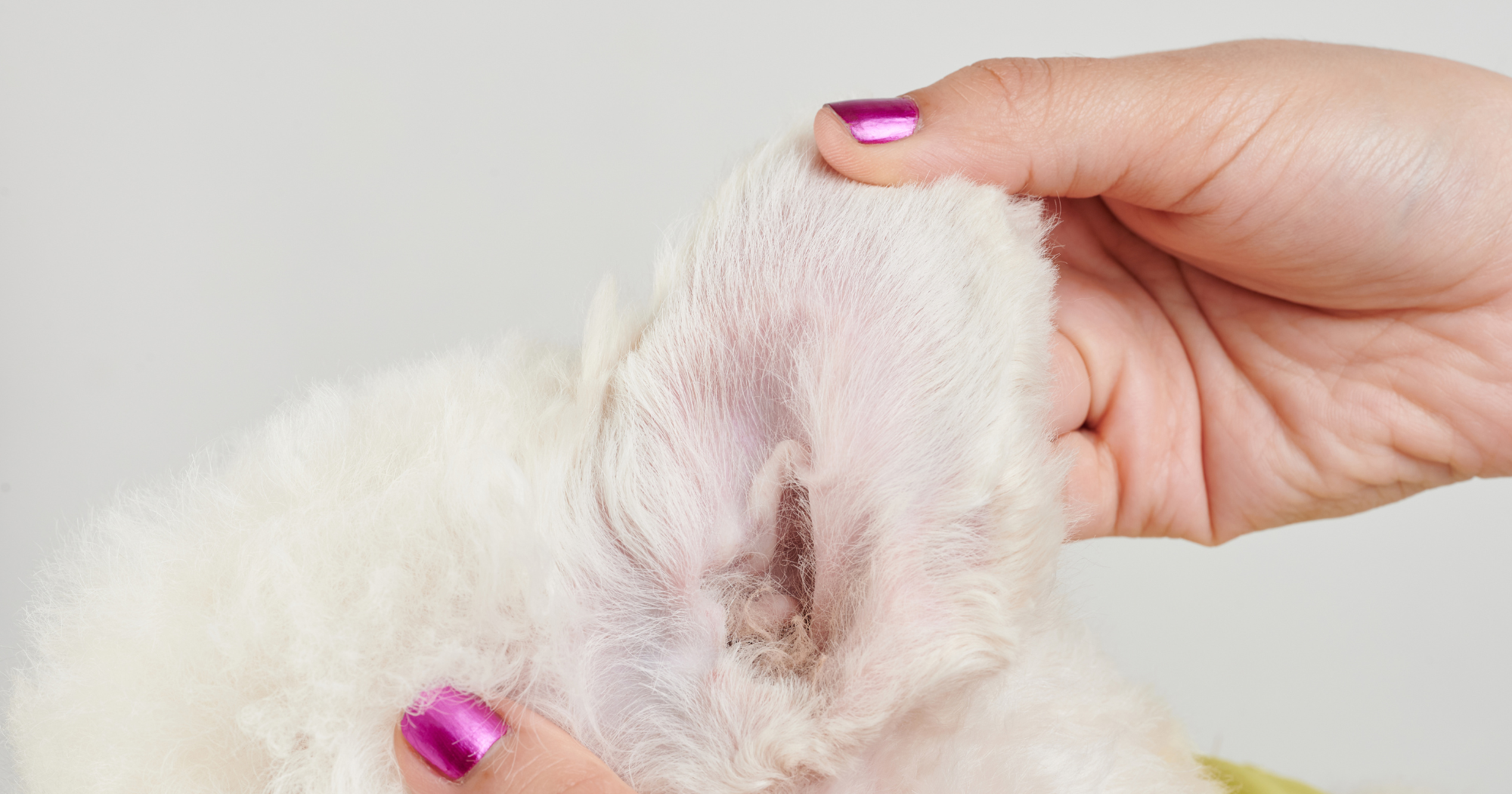
A dog’s comfort and quality of life are closely linked to their sensory health, and their ear canal plays a major role. Proper ear care is not just about grooming; it’s essential for preventing infections, discomfort, and long-term health issues. As awareness grows, the global dog ear care market is projected to reach USD 1,382.5 million by 2035, reflecting the growing importance of ear health for every breed.
Why Regular Dog Ear Cleaning Prevents Infections
Regular Dog Ear Cleaning helps remove ear wax, ear debris and yeast from your dog’s ears. Clean ears reduce fungal infections, ear inflammation and unpleasant smells. Early ear cleaning also lets owners spot infection signs such as redness, ear swelling or a foul odour before they become painful. Proactive inspection supports better ear hygiene and overall well-being.
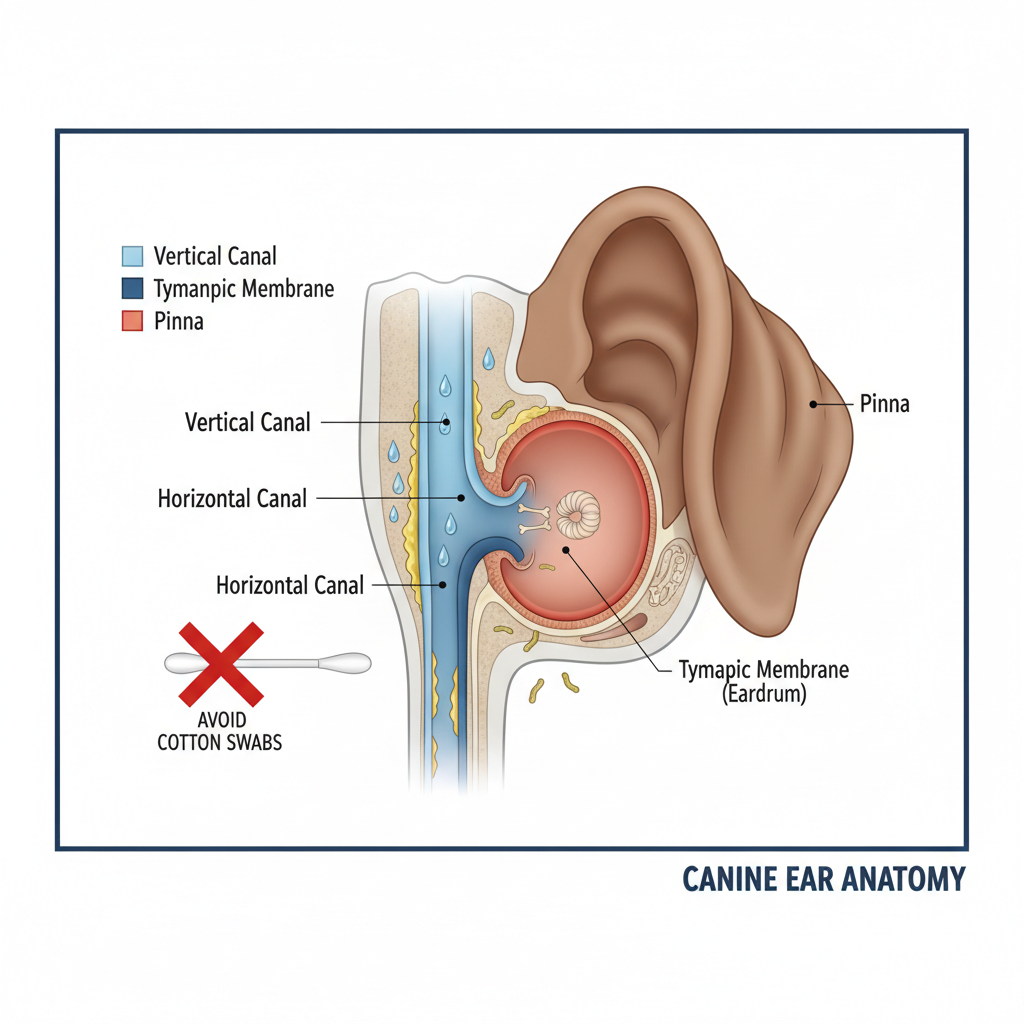
Understanding Your Dog’s Ear Anatomy
Dog’s Ear Anatomy is unique. Their ear canal forms an L-shape, with both a vertical and a horizontal canal. While this design enhances hearing, it can trap moisture and wax. The ear flap (pinna) can close over the canal, keeping it warm and damp, which encourages bacteria. The tympanic membrane, or eardrum, sits deep inside, and damage here can cause trauma to the eardrum and even hearing loss. Avoid using cotton swabs, which can push wax deeper and cause injury.
Breeds with long ears, such as Basset Hounds and Cocker Spaniels, face higher risks, as explained by Vetnique, because air circulation is limited. Dogs with hairy ear canals, like Poodles or Schnauzers, also need more frequent checks.
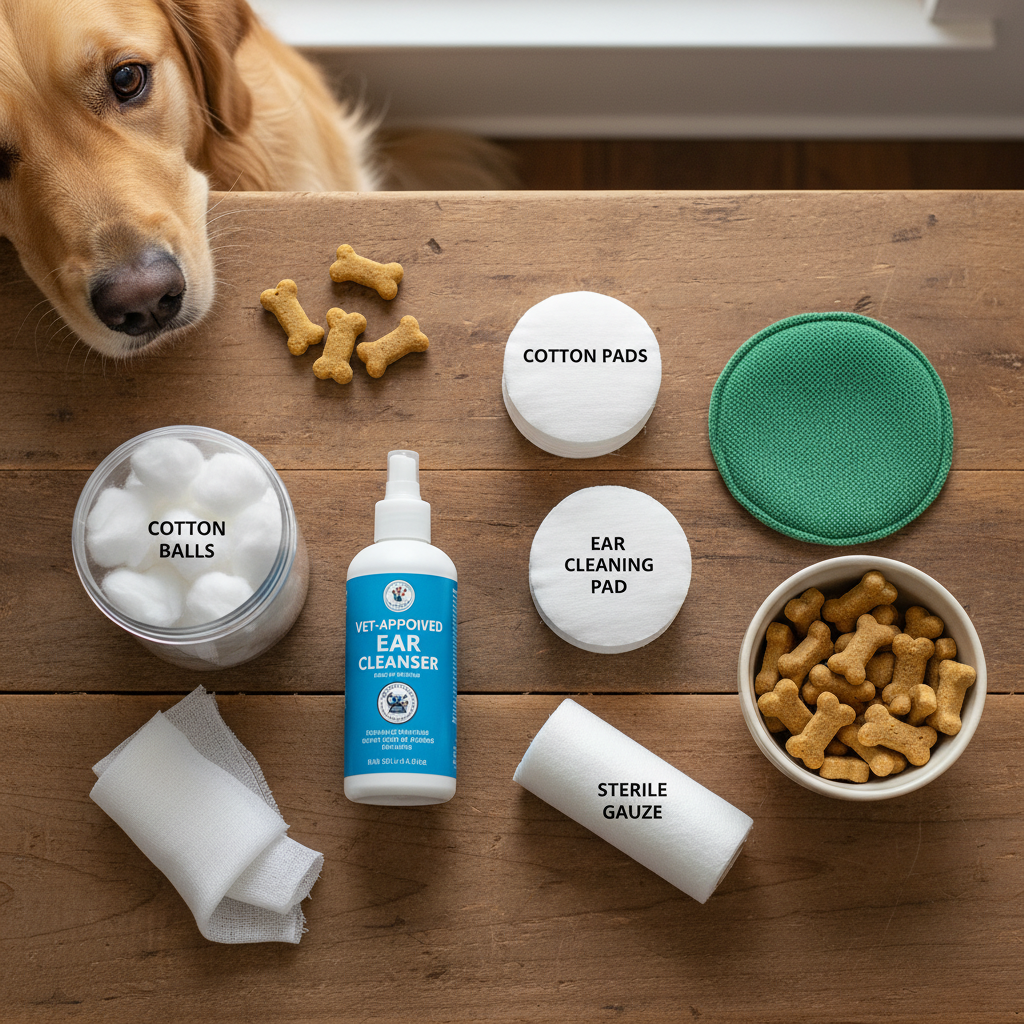
Safe Ear Cleaning Routine: Step-by-Step
-
Before you start, gather your cleaning supplies: a vet-approved ear cleaning solution, cotton balls, cotton pads or an ear cleaning pad, soft gauze, and treats to reward your dog.
- Prepare your dog in a calm, quiet area.
- Apply an ear cleanser or ear rinse into the canal until it fills.
- Massage the ear base for 20 to 30 seconds to loosen wax buildup.
- Let your dog shake its head to remove loosened ear debris.
- Wipe clean the outer canal and ear flap with gauze or cotton balls.
Do not use hydrogen peroxide, alcohol, or home remedies like almond oil or vinegar rinses. These can irritate your dog’s sensitive skin. For easy home care, try Bugalugs Soothing Ear Cleaner, formulated to gently remove dirt and wax while soothing irritation.
If you prefer a quick, mess-free option, ear cleaning wipes are ideal between washes. Options like the Furrish Biodegradable Ear Wipes or Bugalugs Soothing Ear Wipes for Dogs are perfect for regular upkeep and gentle cleaning.
Preventing Ear Infections and Chronic Ear Health Problems
Ear infections are among the most common ear health problems in dogs. Regular inspection after bathing or swimming helps prevent ear discharge and irritation. Chronic ear infections often happen because of allergies. These allergies can come from the environment or food. Treating allergies can stop infections from coming back.
Certain breeds such as Spaniels, Poodles and Retrievers need extra care, while upright-eared breeds may collect debris or grass seeds. Always keep an eye out for ear mites, scratching or changes in odour.
If your dog often gets infections, use vet-approved products like Bugalugs Antiseptic Ear Drops, Johnson’s Antiseptic Ear Drops for Dogs & Cats, or Otodex Veterinary Ear Drops for Dogs & Cats. These help cleanse, soothe and protect against bacteria while supporting a healthy ear canal.
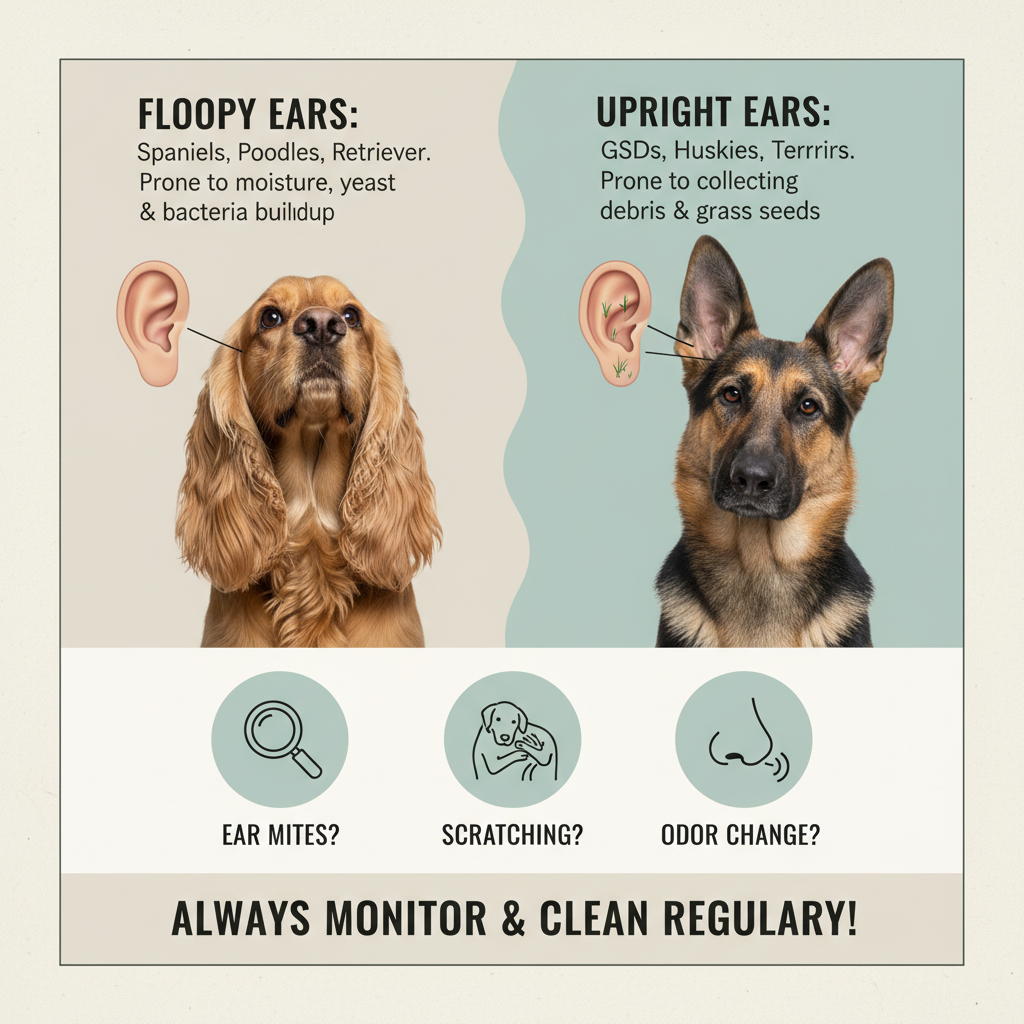
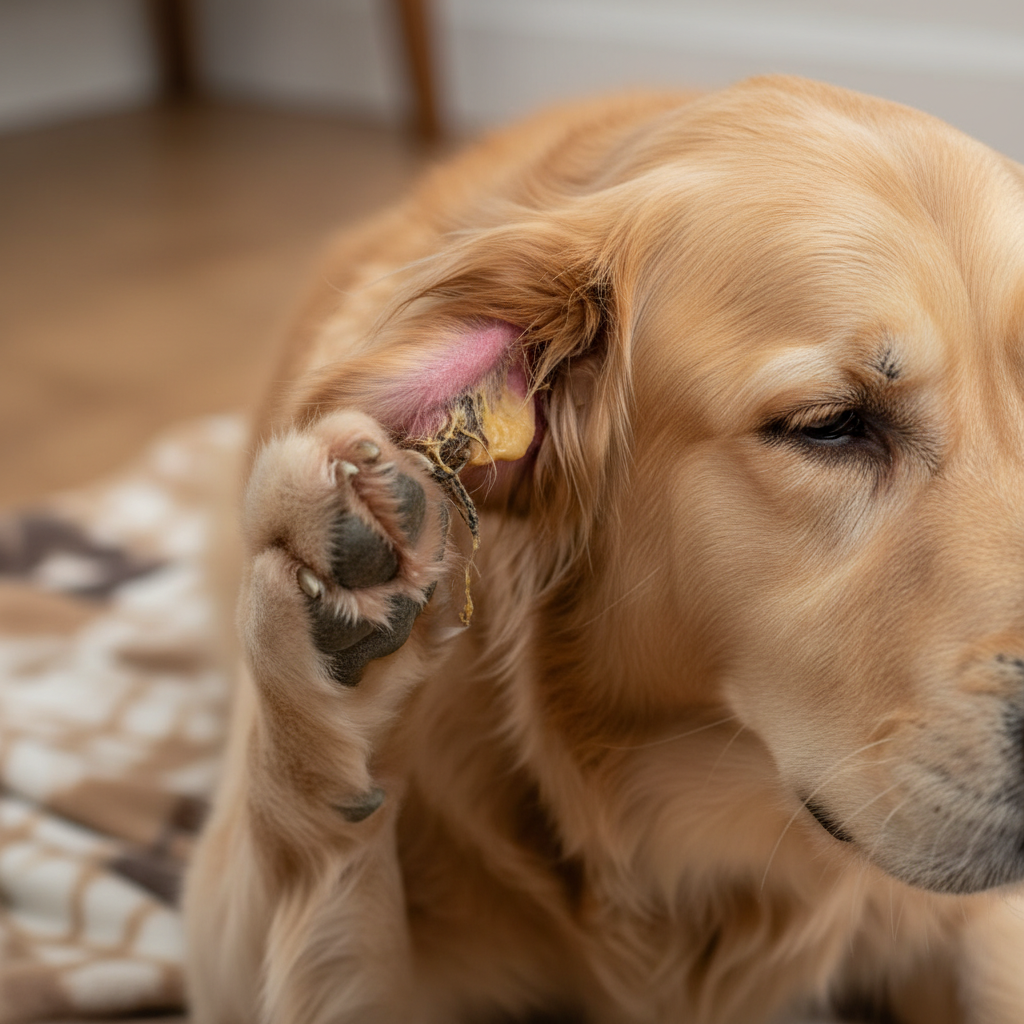
Recognising Ear Infection Signs
Most ear infections (otitis externa) occur in the outer canal and account for around 90% of all cases. They’re often caused by bacteria, yeast or parasites.
Watch for:
- Persistent head shaking or tilting
- Scratching or pawing at the ear flap
- Ear discharge or foul odour
- Redness, swelling or pain
According to the Morris Animal Foundation, ear problems account for 7 to 10% of vet visits. Early detection prevents chronic pain, deeper infections and permanent hearing loss.
When to Consult a Vet for Dog Ear Infections
A veterinary dermatologist or vet should always diagnose and treat an ear infection. Vets can examine the canal with an otoscope and sample the ear wax to identify bacteria or ear mites. Groomers can help with maintenance but should never diagnose or medicate.
If your dog has ear infections that keep coming back, your local vet may send you to a skin specialist in Ireland or the UK for more tests and treatment. Many veterinary clinics in Ireland also clean pets’ ears. They help pets with long-term ear inflammation.
Choosing the Right Ear Cleaning Solutions
The pet ear cleanser market was valued at USD 425 million in 2023. Not all ear cleaning solutions are equal. Choose ear cleaning solutions that are pH-balanced and approved by vets. These solutions gently remove wax and lower bacteria. Products such as Bugalugs Soothing Ear Cleaner are designed for safe, regular use and contain soothing ingredients suitable for sensitive dog ears.
For an eco-friendly ear wipe choice, use biodegradable wipes like Furrish Biodegradable Ear Wipes. They clean gently and use materials that break down naturally.
Maintaining Ear Hygiene Long-Term
Consistent, gentle care is the key to good ear hygiene. Cleaning your dog’s ears regularly helps prevent infection signs. Use good ear cleaning solutions and take your dog to the vet for check-ups. This keeps your dog’s ears healthy long-term.
A few minutes of care each week, along with regular visits to your local vet, can prevent pain, hearing loss and infection. With the right Ear Cleanser and trusted products from Dec’s Pets, your dog’s ears will stay clean, comfortable and healthy for years to come.




